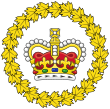
The Province of Canada was a British colony in North America from 1841 to 1867. Its formation reflected recommendations made by John Lambton, 1st Earl of Durham in the Report on the Affairs of British North America following the Rebellions of 1837–1838.
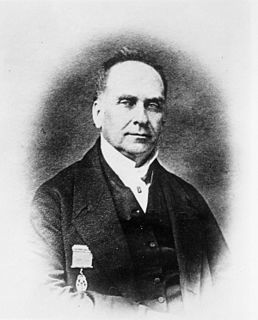
Robert Baldwin was a Canadian lawyer and politician who with his political partner Louis-Hippolyte Lafontaine, led the first responsible ministry in Canada. "Responsible Government" marked the country's democratic independence, without a revolution, although not without violence. This achievement also included the introduction of municipal government, the introduction of a modern legal system and the Canadian Jury system, and the abolishing of imprisonment for debt. Baldwin is also noted for resisting a decades-long tradition of Orange Order terrorism of political reform in the colony, that went so far as to burn the Parliament buildings in Montreal in 1849.

Sir Louis-Hippolyte MénardditLa Fontaine, 1st Baronet, KCMG was a Canadian politician who served as the first Premier of the United Province of Canada and the first head of a responsible government in Canada. He was born in Boucherville, Lower Canada in 1807. A jurist and statesman, La Fontaine was first elected to the Legislative Assembly of Lower Canada in 1830. He was a supporter of Papineau and member of the Parti canadien. After the severe consequences of the Rebellions of 1837 against the British authorities, he advocated political reforms within the new Union regime of 1841.

William Lyon Mackenzie was a Scottish-born Canadian-American journalist and politician. His strong views on political equality and clean government drove him to outright rebellion in 1837 after a career as mayor of Toronto and in the colonial legislative assembly of Upper Canada (Ontario). He led the 1837 Upper Canada Rebellion and during its bitter end he set up a small rebel enclave named "Republic of Canada," where he served as president December 13, 1837 to January 14, 1838. After a period of exile in the U.S., he returned to Canada and served as elected member of the Legislative Assembly of the Province of Canada from 1851 to 1858.

The Upper Canada Rebellion was an insurrection against the perceived oligarchic government of the British colony of Upper Canada in December 1837. While public grievances had existed for years, it was the rebellion in Lower Canada, which started the previous month, that emboldened rebels in Upper Canada to openly revolt.
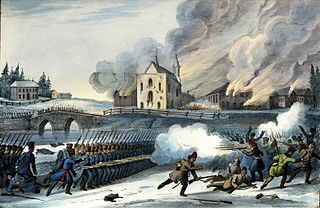
The Rebellions of 1837–1838, also sometimes called the Canadian Revolution, were two armed uprisings that took place in Lower and Upper Canada in 1837 and 1838. Both rebellions were motivated by frustrations with political reform. A key shared goal was responsible government, which was eventually achieved in the incidents' aftermath. The rebellions led directly to Lord Durham's Report on the Affairs of British North America and to The British North America Act, 1840 which partially reformed the British provinces into a unitary system and eventually led to the British North America Act, 1867 which created Canada and its government.
Joint Premiers of the Province of Canada were the leaders of the Province of Canada, from the 1841 unification of Upper Canada and Lower Canada until Confederation in 1867.
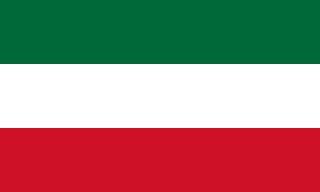
The Parti canadien or Parti patriote was a primarily francophone political party in what is now Quebec founded by members of the liberal elite of Lower Canada at the beginning of the 19th century. Its members were made up of liberal professionals and small-scale merchants, including François Blanchet, Pierre-Stanislas Bédard, John Neilson, Jean-Thomas Taschereau, James Stuart, Louis Bourdages, Denis-Benjamin Viger, Daniel Tracey, Edmund Bailey O'Callaghan, Andrew Stuart and Louis-Joseph Papineau.
Clear Grits were reformers in the Canada West district of the Province of United Canada, a British colony that is now the Province of Ontario, Canada. Their name is said to have been given by David Christie, who said that only those were wanted in the party who were "all sand and no dirt, clear grit all the way through".

The Blue Party was a political group that contested elections in the Eastern section of the Province of Canada. The Blue Party was ideologically located on the political right, and was defined by its support for the Catholic Church, and later for supporting confederation.

The Red Party was a political group that contested elections in the Eastern section of the Province of Canada. It was formed around 1847 by radical French-Canadians inspired by the ideas of Louis-Joseph Papineau, the Institut canadien de Montréal, and the reformist movement led by the Parti patriote of the 1830s.
Liberalism has been a major trend in Canadian politics since the late 18th century. Canada has the same features of other liberal democracies in the Western democratic political tradition. This article gives an overview of liberalism in Canada. It includes a brief history of liberal parties with substantial representation in parliament. Canadian liberalism is different from the American use of the term, as it contains ideas such as support for economic liberalism.

Samuel Bealey Harrison was Joint Premier of the Province of Canada for Canada East from 1841 to 1842 with William Henry Draper PM for Canada West. Draper was a member of the Family Compact and Harrison was a moderate Reformer, the predecessor of the Liberal Party of Canada.
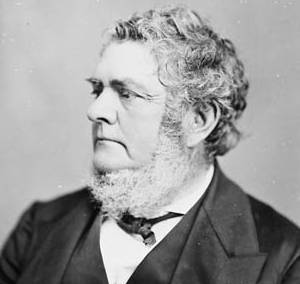
Malcolm Cameron was a Canadian businessman and politician.
Caleb Hopkins was a farmer and politician in Upper Canada.

Beginning with the 1763 Treaty of Paris, New France, of which the colony of Canada was a part, formally became a part of the British Empire. The Royal Proclamation of 1763 enlarged the colony of Canada under the name of the Province of Quebec, which with the Constitutional Act 1791 became known as the Canadas. With the Act of Union 1840, Upper and Lower Canada were joined to become the United Province of Canada.

David Willson (1778–1866) was a religious and political leader who founded the Quaker sect known as, 'The Children of Peace' or 'Davidites,' based at Sharon in York County, Upper Canada in 1812. As the primary minister to this group, he led them in constructing a series of remarkable buildings, the best known of which is the Sharon Temple, now a National Historic Site of Canada. A prolific writer, sympathizer and leader of the movement for political reform in Upper Canada, Willson and his followers ensured the election of William Lyon Mackenzie, and both "fathers of Responsible Government", Robert Baldwin and Louis LaFontaine, in their riding.

The Reform movement was a political movement in British Canada in the early 19th century.
